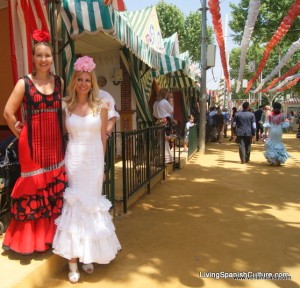History and full information about one the most typical Spanish Fair in Spain:
The April Fair Sevilla.
To describe the birth of the Seville Fair it must be based on two stages or periods in the history of Seville.
The first contact that has the Sevillian people with what we call fair, is from the hand of King Alfonso X, son of the conqueror Fernando III, who gave permission for the holding of two annual fairs, April and San Miguel in autumn.
Throughout the years after the vicissitudes of Seville in economics and politics, the people of Seville cease to hold such festivals, which made over 1845 again restore the fair, after the losses of the French invasion, the full economic downturn, some industrial adventures (like so famous pottery of Triana and Carthusian found even in Greece) and hurricane in 1942 that devastated Seville. These parties were restored as revulsive for the Sevillian population sank into an economic crisis and spirit.
Hard to believe, but if we rely on the story, is true. It was not the Sevillian people responsible for re-establishing what already was once belonged to them, in fact they where two councillors of the City of Seville: the Basque Jose Maria Ybarra and the Catalan Narciso Bonaplata, both had the magnificent idea of restoring two fairs in Seville, the April and September Fairs. With the passage of time alone would win the April Fair with more public agglomeration and fame in all Spain.
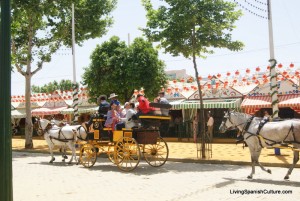 But it was the Sevillian people who made fair April resurface each year without losing any of their same traditions, songs, dances, joviality and fresh air with every year to this days maintains the Week Fair in Seville.Thus it began on April 18th, 1847 the first “new fair” or the first in modern times. It was stood at Prado de San Sebastián with 19 casetas (houses) and such agglomeration public join the Fair, that the following year a greater number of security officer was requested because the Seville and Sevillian with their songs and dances hampered the main task of the fair: the exchange and the sale of cattle to the public.
But it was the Sevillian people who made fair April resurface each year without losing any of their same traditions, songs, dances, joviality and fresh air with every year to this days maintains the Week Fair in Seville.Thus it began on April 18th, 1847 the first “new fair” or the first in modern times. It was stood at Prado de San Sebastián with 19 casetas (houses) and such agglomeration public join the Fair, that the following year a greater number of security officer was requested because the Seville and Sevillian with their songs and dances hampered the main task of the fair: the exchange and the sale of cattle to the public.
The Fair in our times has changed a lot. What began as a simple trade, it has been becoming so popular that today is considered one of the most popular and traditional events that show the joy and color of all Sevillian, Sevilla image and Andalusian character and beyond international borders being very popular and characteristic of Spain.
Since 1973 the new location is hold in the neighborhood Los Remedios, lands that were rescued from the Guadalquivir river after its works.
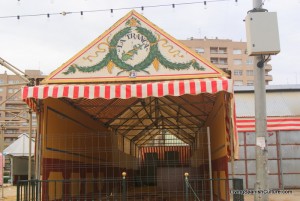 The caseta has two different areas: the front or noble open to the street, where friends and relatives live and enjoy the fair and the back room where the kitchen is located, also the bar and toilettes.
The caseta has two different areas: the front or noble open to the street, where friends and relatives live and enjoy the fair and the back room where the kitchen is located, also the bar and toilettes.
The current extension of the entire fair ground, is approximately 450,000 m2, as stated above, the fair began with at least 19 casetas, today has about 1048 casetas and are thinking about the possibility of extending the current surface.
The main structures of the Fair are the casetas, as it houses that give life to the fair that is where the entire population gathers to give life to the fair, there are a number of features that is necessary to emphasize; as are the streets that form the enclosure, calls long streets of 10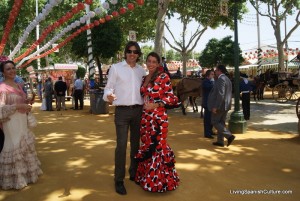 meters long and cutting those long, short of 7 meters in length forming the fairgrounds, much like a Roman structure that is a rectangular planimetry in they were about long north-south avenues, perfectly cut by short streets from east to west. The real characteristic of these streets is its name. Every street has the name of an important torero (bullfighter) including Seville Curro Romero figure, or the father of modern bullfighting : Juan Belmonte.
meters long and cutting those long, short of 7 meters in length forming the fairgrounds, much like a Roman structure that is a rectangular planimetry in they were about long north-south avenues, perfectly cut by short streets from east to west. The real characteristic of these streets is its name. Every street has the name of an important torero (bullfighter) including Seville Curro Romero figure, or the father of modern bullfighting : Juan Belmonte.
Lights and ornaments of the streets play a very important role to integrate into the joyful spirit of the fair, all the bulbs in the streets are decorated with “farolillos” lanterns, which are small balls of paper that are placed around the bulbs in the streets to give a different color, almost always have very characteristic drawings show such as cheerful, bright and polka dots color.
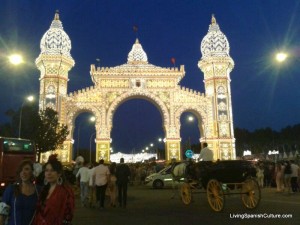 La Portada (cover), What’s the cover? anyone who does not know what is the Seville Fair wonder…, any Sevillian would say the meeting point, would be right in part with that definition, because at La Portada is the place where the group of friends meet before entering the fairgrounds, but La Portada is the main entry.
La Portada (cover), What’s the cover? anyone who does not know what is the Seville Fair wonder…, any Sevillian would say the meeting point, would be right in part with that definition, because at La Portada is the place where the group of friends meet before entering the fairgrounds, but La Portada is the main entry.
Each year La Portada has a new design and a different structure, each year a different Sevillian architect who makes the structure and always inspired by a building, anecdote or historical moment of Seville that identifies the city.
Portadas of April Fair in Seville.pdf from 1990 t0 2016.


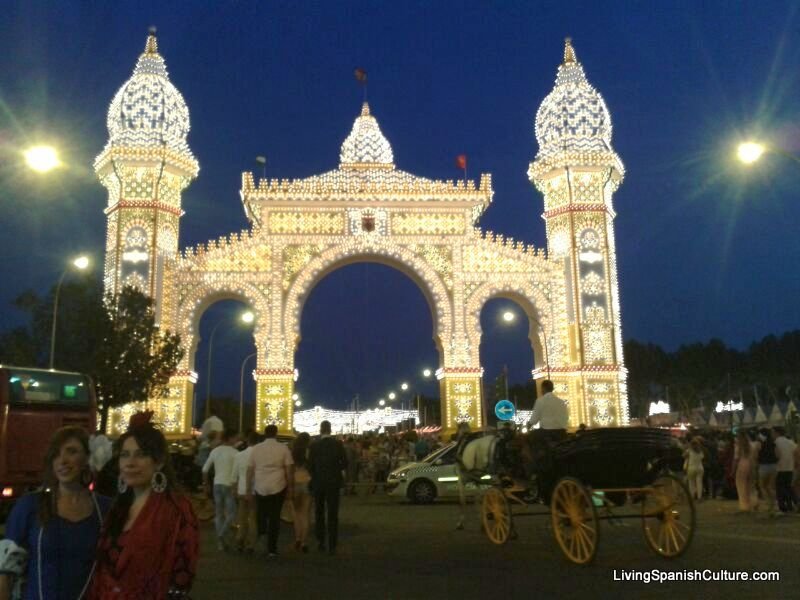
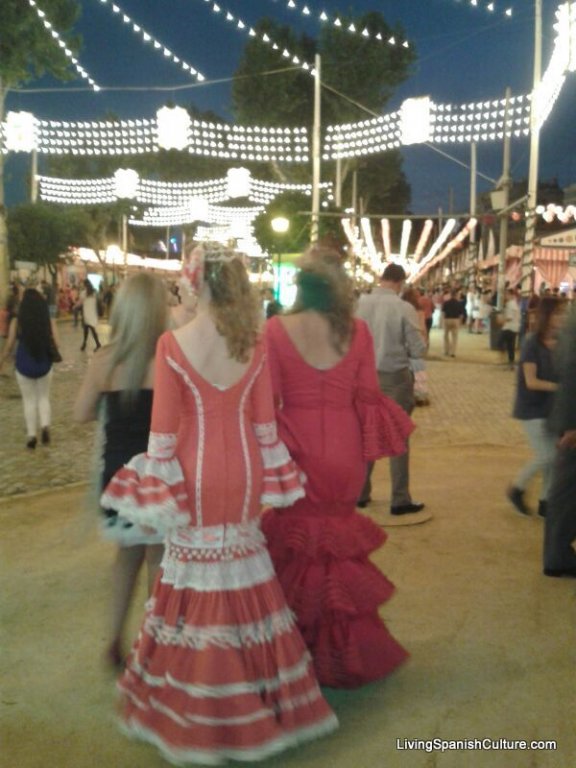
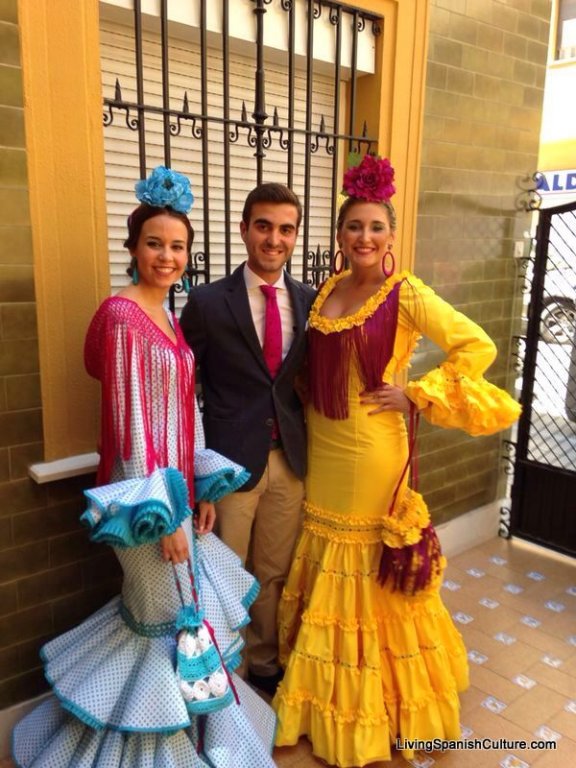
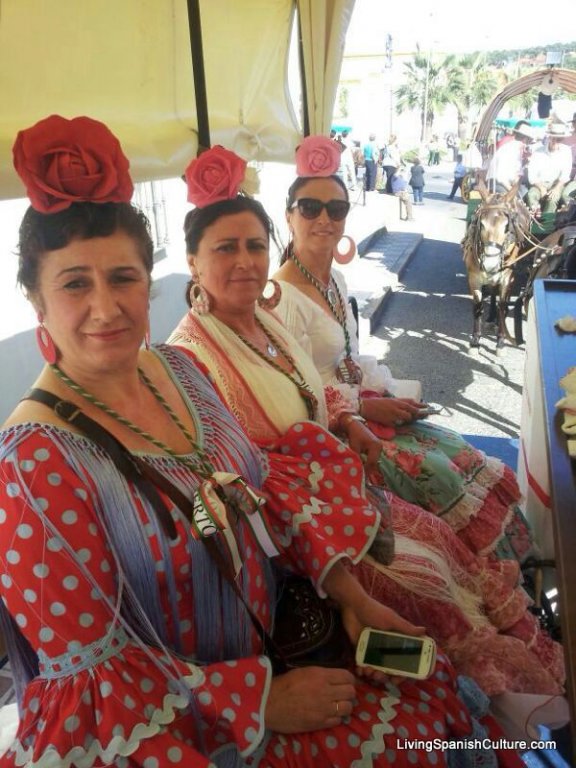
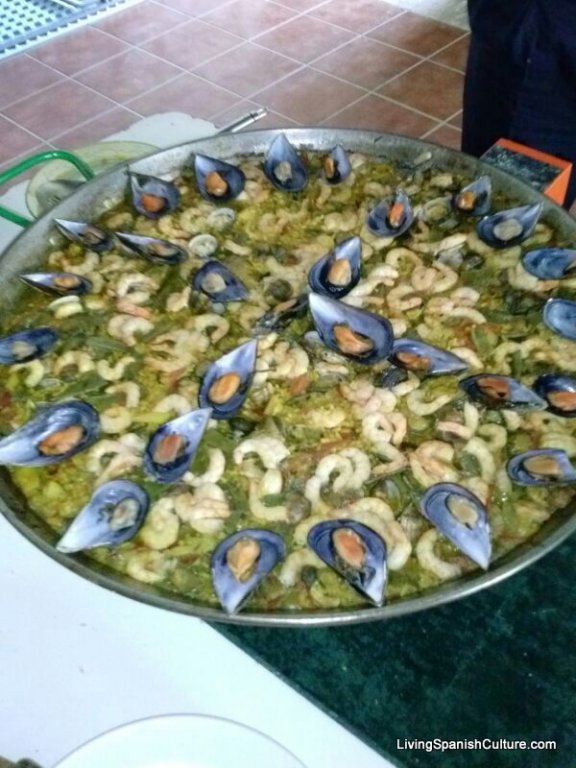
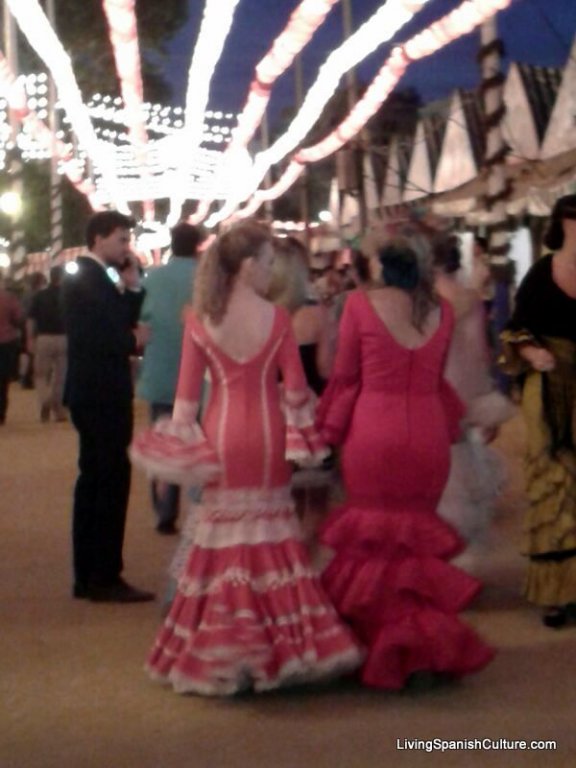
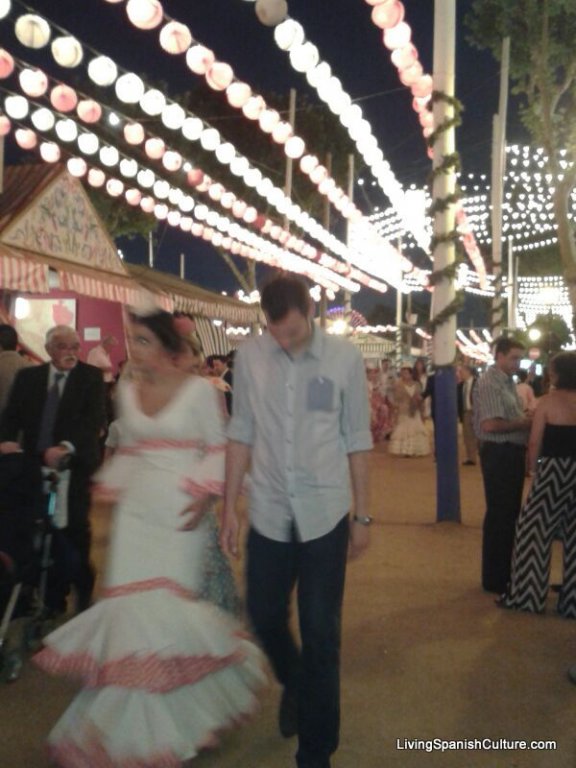
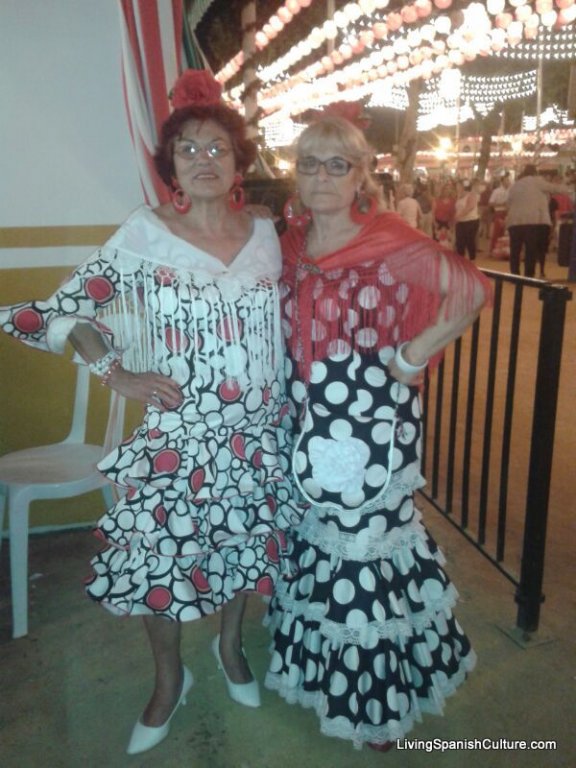

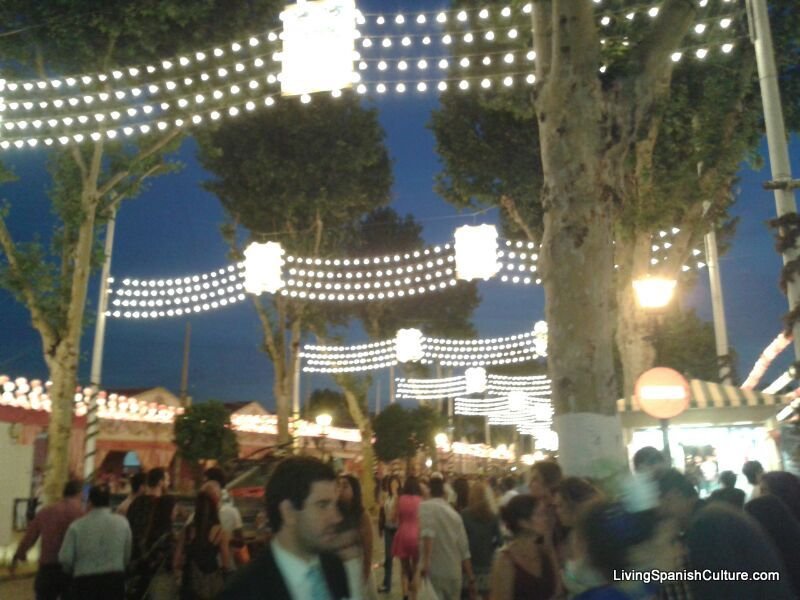
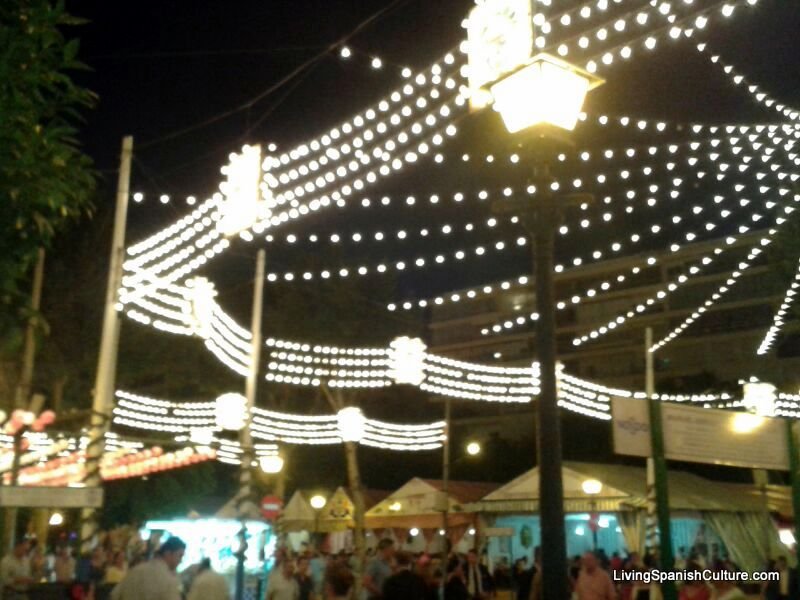
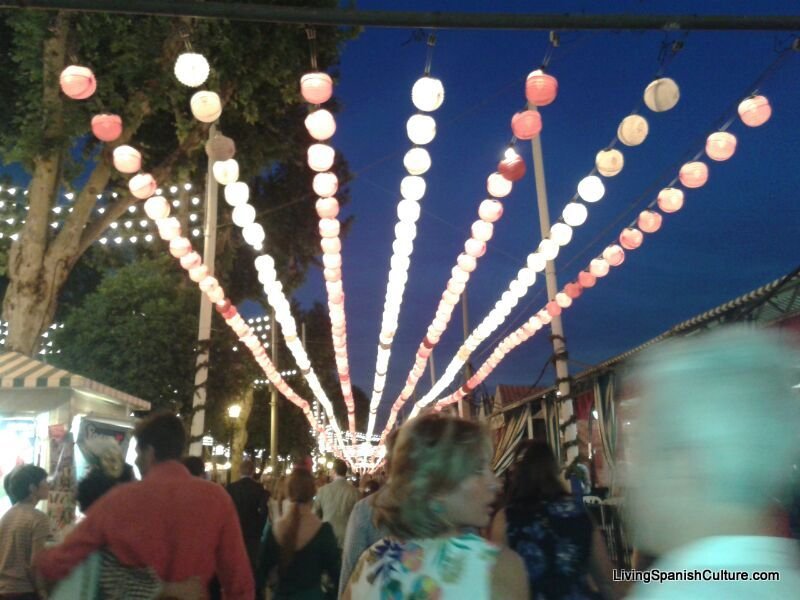
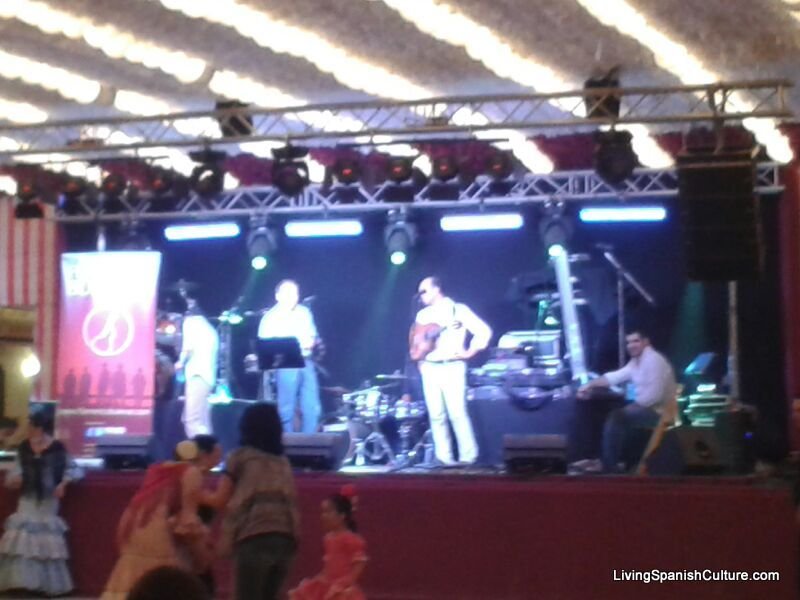
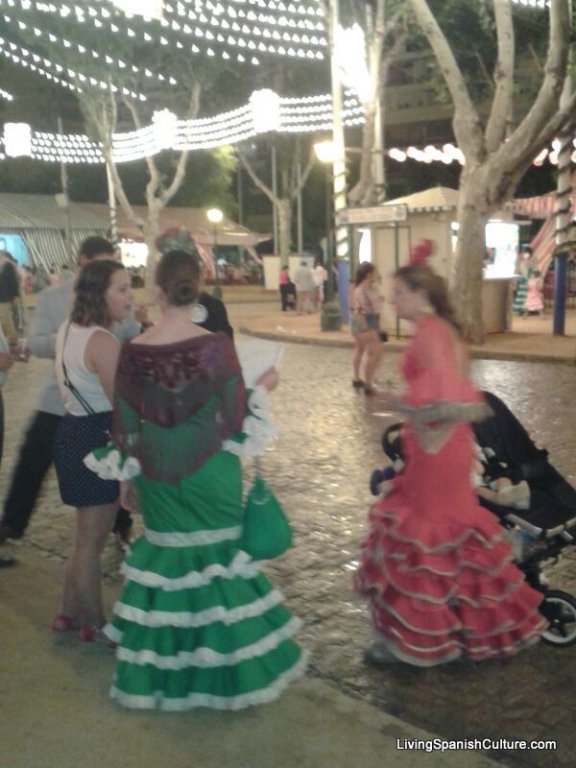
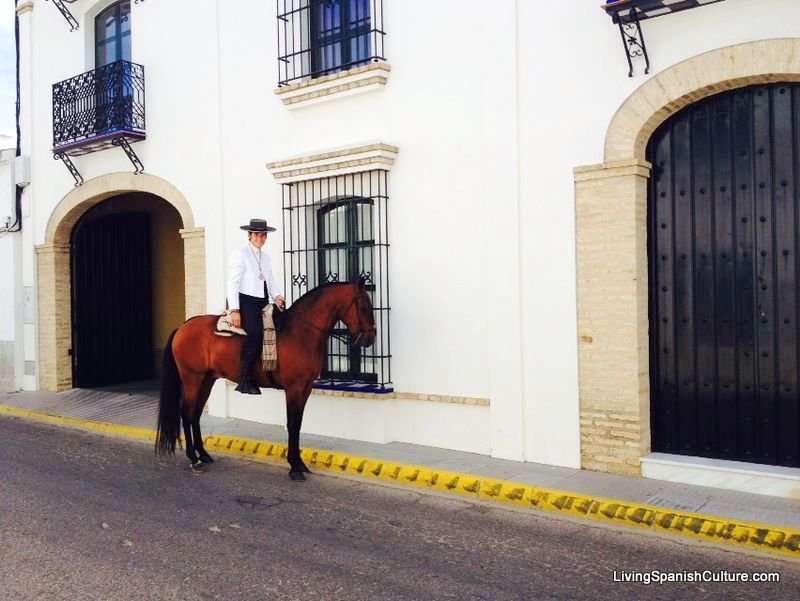
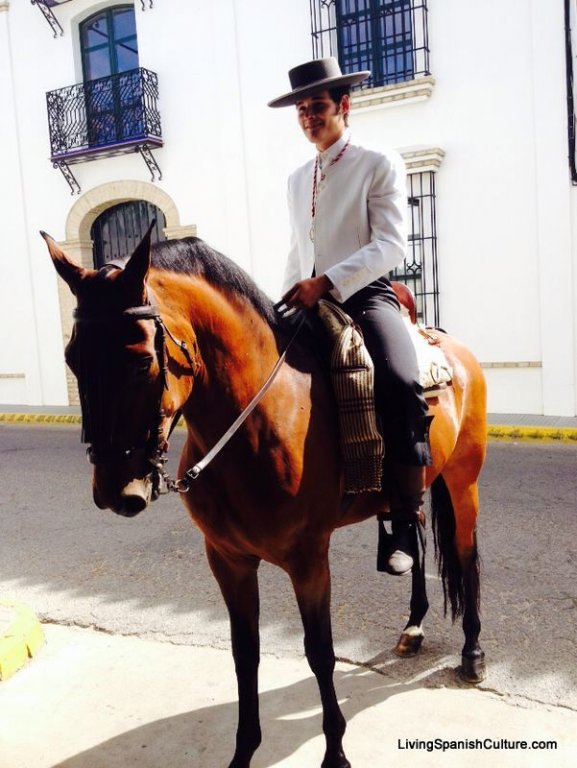


 meters long and cutting those long, short of 7 meters in length forming the fairgrounds, much like a Roman structure that is a rectangular planimetry in they were about long north-south avenues, perfectly cut by short streets from east to west. The real characteristic of these streets is its name. Every street has the name of an important torero (bullfighter) including Seville Curro Romero figure, or the father of modern bullfighting : Juan Belmonte.
meters long and cutting those long, short of 7 meters in length forming the fairgrounds, much like a Roman structure that is a rectangular planimetry in they were about long north-south avenues, perfectly cut by short streets from east to west. The real characteristic of these streets is its name. Every street has the name of an important torero (bullfighter) including Seville Curro Romero figure, or the father of modern bullfighting : Juan Belmonte.
